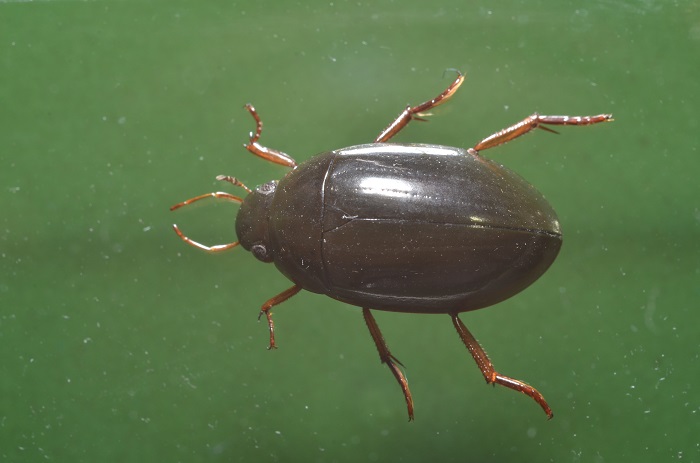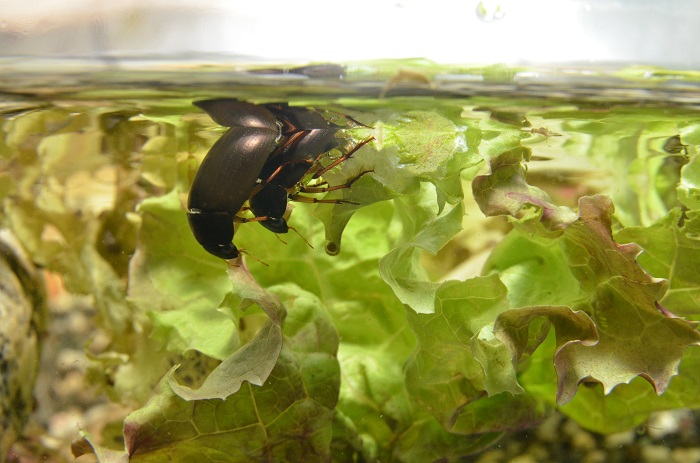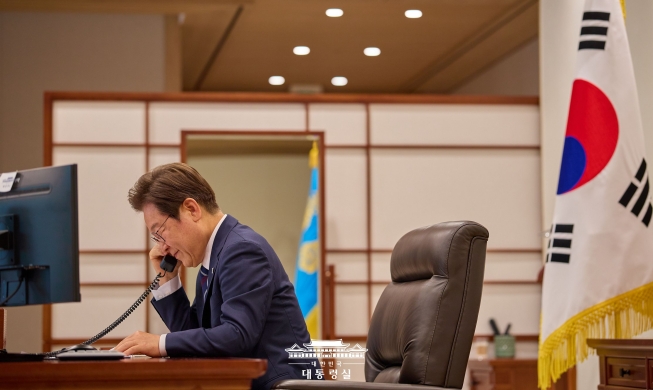A new technology has been developed that will make your summer much less annoying. It's a technology that can catch mosquitoes.
The Korea Environmental Industry Technology Institute recently announced that it has come up with a new method to catch mosquitoes using another insect, the silver water beetle, Hydrochara affinis. They created a digital monitoring system that can detect where and how many mosquitoes are found in a specific location. Launched in the mosquito-crowded region, such as wetlands and around ponds, the system would spray carbon dioxide to lure the biters. With the mosquitoes detected and measured, the silver water beetle will then be released to prey on them.


In order to prove its efficacy, in 2013 the institute carried out experiments by releasing the beetle in an artificial pond in Dangsan Park, Yeongdeongpo-gu District, Seoul. The total number of mosquitoes detected during the experiment was 620. A year later, the figure had dropped to under 100, a result deemed significant by researchers.
The silver water beetle preys on mosquito larva under water. When it is fully grown, it feeds on underwater animals and plants. One beetle egg can bear as many as 70 baby beetles and the adults who have experienced two molts can eat more than 900 mosquito larva per day.
Many different types of fish have been tested for their capacity to catch mosquito eggs, including loaches and minnows. However, there have been limitations and problems. Loaches and weather fish prey on all other underwater animals, damaging the submarine ecology. Minnows and Chinese bleak can only live in clean water. The silver water beetle, researchers have determined, is the perfect choice, as it lives in a similar environment with mosquitoes and it can be provided in large numbers. Also, when it grows older, silver water beetles tend to feed on a wide range of plants, reducing any specific damage to biodiversity.
The institute plans to make the technology available for commercial use, and also through international aid programs to countries in Southeast Asia and Central Africa.
By Lee Seung-ah
Korea.net Staff Writer
Photos Korea Environmental Industry Technology Institute
slee27@korea.kr
The Korea Environmental Industry Technology Institute recently announced that it has come up with a new method to catch mosquitoes using another insect, the silver water beetle, Hydrochara affinis. They created a digital monitoring system that can detect where and how many mosquitoes are found in a specific location. Launched in the mosquito-crowded region, such as wetlands and around ponds, the system would spray carbon dioxide to lure the biters. With the mosquitoes detected and measured, the silver water beetle will then be released to prey on them.


The silver water beetle, Hydrochara affinis, can be used to catch mosquitoes.
In order to prove its efficacy, in 2013 the institute carried out experiments by releasing the beetle in an artificial pond in Dangsan Park, Yeongdeongpo-gu District, Seoul. The total number of mosquitoes detected during the experiment was 620. A year later, the figure had dropped to under 100, a result deemed significant by researchers.
The silver water beetle preys on mosquito larva under water. When it is fully grown, it feeds on underwater animals and plants. One beetle egg can bear as many as 70 baby beetles and the adults who have experienced two molts can eat more than 900 mosquito larva per day.
Many different types of fish have been tested for their capacity to catch mosquito eggs, including loaches and minnows. However, there have been limitations and problems. Loaches and weather fish prey on all other underwater animals, damaging the submarine ecology. Minnows and Chinese bleak can only live in clean water. The silver water beetle, researchers have determined, is the perfect choice, as it lives in a similar environment with mosquitoes and it can be provided in large numbers. Also, when it grows older, silver water beetles tend to feed on a wide range of plants, reducing any specific damage to biodiversity.
The institute plans to make the technology available for commercial use, and also through international aid programs to countries in Southeast Asia and Central Africa.
By Lee Seung-ah
Korea.net Staff Writer
Photos Korea Environmental Industry Technology Institute
slee27@korea.kr
